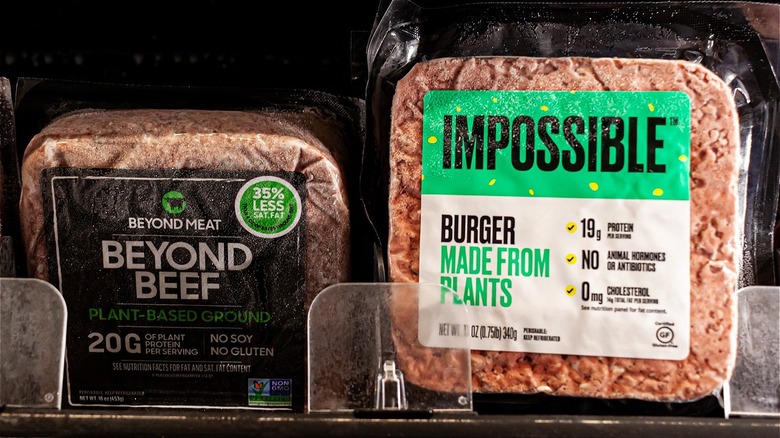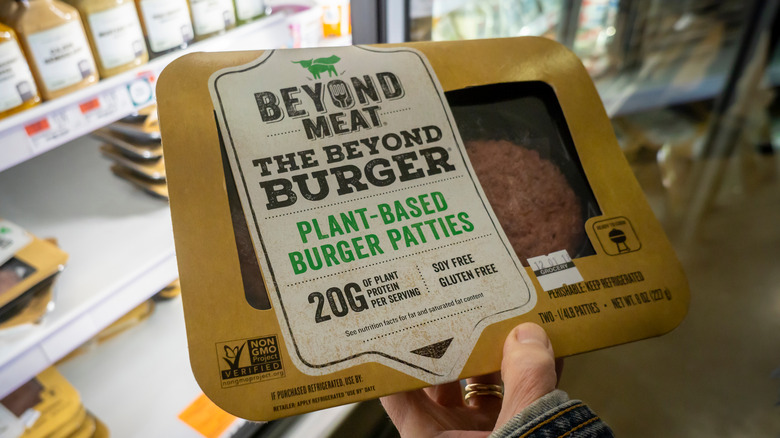New Study Reveals That Plant-Based Meat Alternatives Are On The Rise
With the plethora of brands catering to the plant-based community, there is no better time to increase plant-based meals in one's diet. Plant-based partnerships with large chains like KFC, Burger King, Pizza Hut, and more show how meat alternatives are becoming more mainstream. While the health and climate benefits of a plant-based lifestyle are frequently touted, one underreported element is whether or not the supply of plant-based meat alternatives will be able to keep up with the rising demand.
According to a study from The Good Food Institute, industry insiders are wrestling with that question. Historically, the demand has outpaced the supply chain capabilities of the industry. Given the impacts of COVID-19 on global supply chains, it's easy to imagine how things have been even more challenging in recent years. With many insiders predicting that by the year 2030, plant-based meats will represent 6% of the seafood and global meat market, let's look at what is necessary to prepare for what is sure to come.
The plant-based meat industry needs investments
To achieve the estimated 25 million metric tons of plant-based food products required to keep up with demand by 2030, The Good Food Institute states a $27 billion investment would be necessary. The large sum of money would go towards a minimum of 800 extrusion factories that can produce at least 30,000 metric tons of extruded protein products per year.
The ingredients involved in plant-based alternatives that risk causing restraints on the supply chain include coconut oil, peas, enriched pea protein, soy, and soy protein concentrate. However, all hope is not lost. With the release of this new information, ingredient producers, farmers, and plant-based manufacturers can all predict which supply chain weaknesses may present themselves and make the necessary investments before these problems infringe on their production and sales. As reported by Food Dive, The Good Food Institute's findings lay out an overview of what areas producers, manufacturers, ingredient providers, and investors need to focus on in the future, along with what issues will arise with enough time to address them.
Hopefully, the necessary long-term investments are made to ensure that continuing to make the products revolutionizing the food industry is sustainable.

